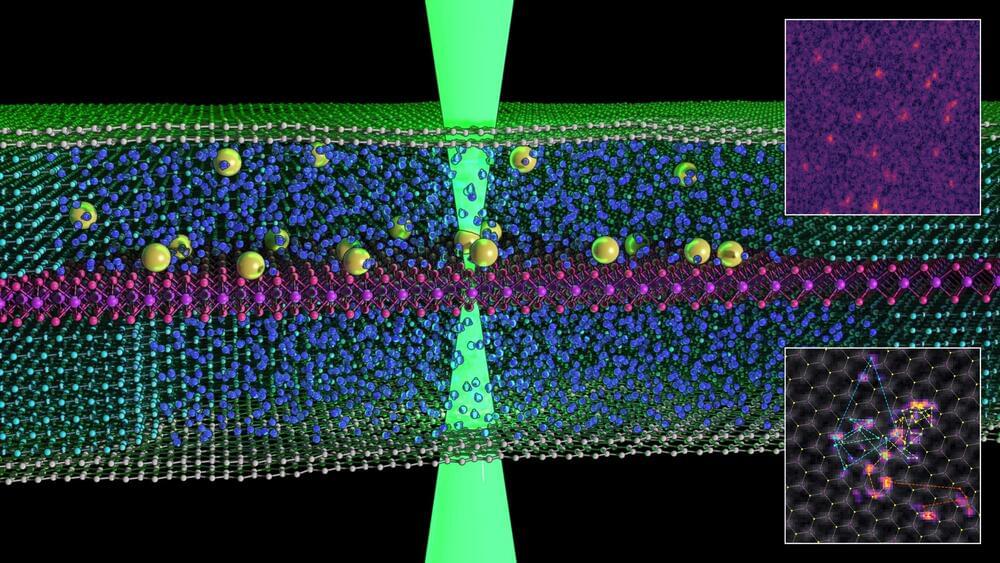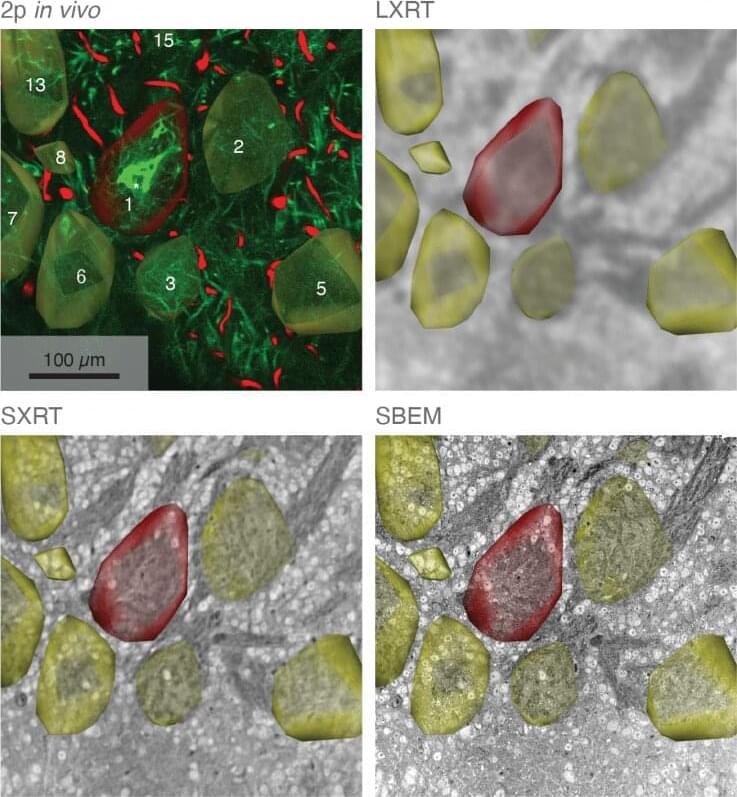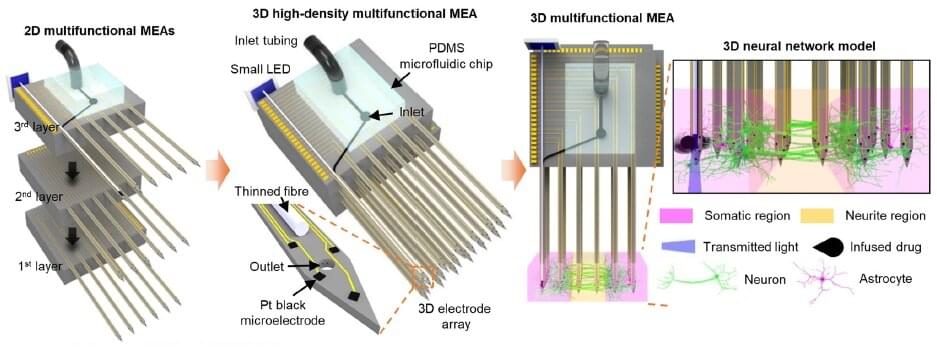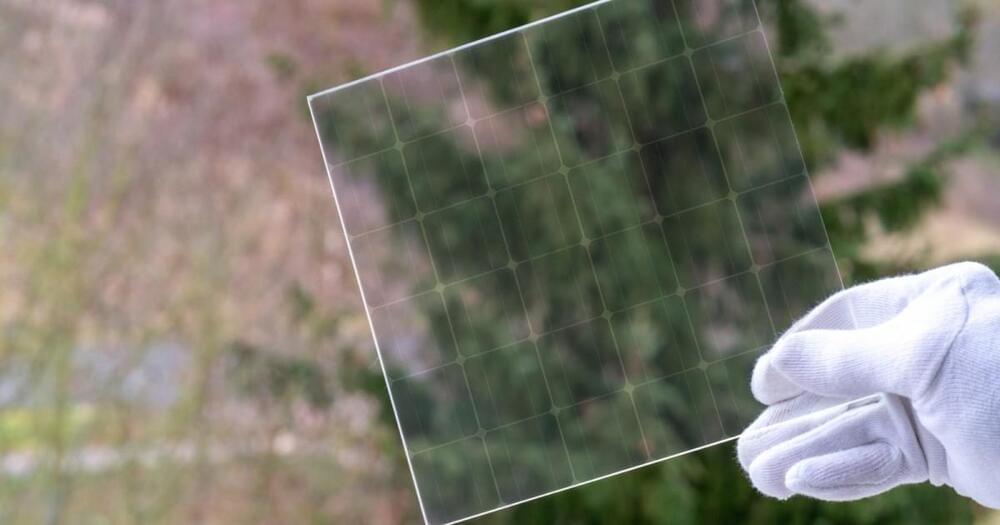Ever since the start of the hot Big Bang, time ticks forward as the Universe expands. But could time ever run backwards, instead?




Graphene scientists from The University of Manchester have created a novel “nano-petri dish” using two-dimensional (2D) materials to create a new method of observing how atoms move in liquid.
Publishing in the journal Nature, the team led by researchers based at the National Graphene Institute (NGI) used stacks of 2D materials like graphene to trap liquid in order to further understand how the presence of liquid changes the behavior of the solid.
The team were able to capture images of single atoms “swimming” in liquid for the first time. The findings could have widespread impact on the future development of green technologies such as hydrogen production.
MRI, electroencephalography (EEG) and magnetoencephalography have long served as the tools to study brain activity, but new research from Carnegie Mellon University introduces a novel, AI-based dynamic brain imaging technology which could map out rapidly changing electrical activity in the brain with high speed, high resolution, and low cost. The advancement comes on the heels of more than thirty years of research that Bin He has undertaken, focused on ways to improve non-invasive dynamic brain imaging technology.
Brain electrical activity is distributed over the three-dimensional brain and rapidly changes over time. Many efforts have been made to image brain function and dysfunction, and each method bears pros and cons. For example, MRI has commonly been used to study brain activity, but is not fast enough to capture brain dynamics. EEG is a favorable alternative to MRI technology however, its less-than-optimal spatial resolution has been a major hindrance in its wide utility for imaging.
Electrophysiological source imaging has also been pursued, in which scalp EEG recordings are translated back to the brain using signal processing and machine learning to reconstruct dynamic pictures of brain activity over time. While EEG source imaging is generally cheaper and faster, specific training and expertise is needed for users to select and tune parameters for every recording. In new published work, He and his group introduce a first of its kind AI-based dynamic brain imaging methodology, that has the potential of imaging dynamics of neural circuits with precision and speed.

Researchers at the Francis Crick Institute have developed an imaging technique to capture information about the structure and function of brain tissue at subcellular level—a few billionths of a meter, while also capturing information about the surrounding environment.
The unique approach detailed in Nature Communications today (25 May), overcomes the challenges of imaging tissues at different scales, allowing scientists to see the surrounding cells and how they function, so they can build a complete picture of neural networks in the brain.
Various imaging methods are used to capture information about tissue, cells and subcellular structures. However, a single method can only capture information about either the structure or function of the tissue and looking in detail at a nanometer scale means scientists lose information about the wider surroundings. This means that to gain an overall understanding of the tissue, imaging techniques need to be combined.

The human brain is less accessible than other organs because it is covered by a thick, hard skull. As a result, researchers have been limited to low-resolution imaging or analysis of brain signals measured outside the skull. This has proved to be a major hindrance in brain research, including research on developmental stages, causes of diseases, and their treatments. Recently, studies have been performed using primary neurons from rats or human-derived induced pluripotent stem cells (iPSCs) to create artificial brain models that have been applied to investigate brain developmental processes and the causes of brain diseases. These studies are expected to play a key role to unlocking the mysteries of the brain.
In the past, artificial brain models were created and studied in 2D; however, in 2017, a research team from KIST developed a 3D artificial brain model that more closely resembled the real brain. Unfortunately, due to the absence of an analytical framework for studying signals in a 3D brain model, studies were limited to analyses of surface signals or had to reform the 3D structure to a flat shape. As such, tracking neural signals in a complex, interconnected artificial network remained a challenge.
The Korea Institute of Science and Technology (KIST) announced that the research teams of Doctors Il-Joo Cho and Nakwon Choi have developed a analysis system that can apply precise non-destructive stimuli to a 3D artificial neural circuit and measure neural signals in real-time from multiple locations inside the model at the cellular level.

Elementary school-age children who get less than nine hours of sleep per night have significant differences in certain brain regions responsible for memory, intelligence and well-being compared to those who get the recommended nine to 12 hours of sleep per night, according to a new study led by University of Maryland School of Medicine (UMSOM) researchers. Such differences correlated with greater mental health problems, like depression, anxiety, and impulsive behaviors, in those who lacked sleep. Inadequate sleep was also linked to cognitive difficulties with memory, problem solving and decision making. The findings were published today in the journal The Lancet Child & Adolescent Health.
The American Academy of Sleep Medicine recommends that children aged six to 12 years of age sleep 9 to 12 hours per night on a regular basis to promote optimal health. Up until now, no studies have examined the long-lasting impact of insufficient sleep on the neurocognitive development of pre-teens.
To conduct the study, the researchers examined data that were collected from more than 8,300 children aged nine to 10 years who were enrolled in the Adolescent Brain Cognitive Development (ABCD) study. They examined MRI images, medical records, and surveys completed by the participants and their parents at the time of enrollment and at a two-year follow-up visit at 11 to 12 years of age. Funded by the National Institutes of Health (NIH), the ABCD study is the largest long-term study of brain development and child health in the U.S.


Presently available in France, the “Electric As You Go” program is for private customers who wish to change their old vehicle to an affordable, sustainable one. Trying to break through ‘” the cost is too much to invest in an EV” scenario (which becomes more disputable each hour of each day), Stellantis introduced “Electric As You Go” and is promoting a more affordable long-term rental program dedicated to battery electric vehicles (BEVs).
The program claims it is efficiently designed to offer breakthrough competitive prices to Stellantis customers. The offer is starting in France and looks hopeful.
There is the customary but “limited” initial down payment and a monthly fee that starts from €110 per month plus a cost of 7 cents per kilometer with a 500 km minimum per month. This new offer frames itself as a breakthrough project. “The main goal of the program is to offer the opportunity to better adapt the total cost of the vehicle to its real use.”